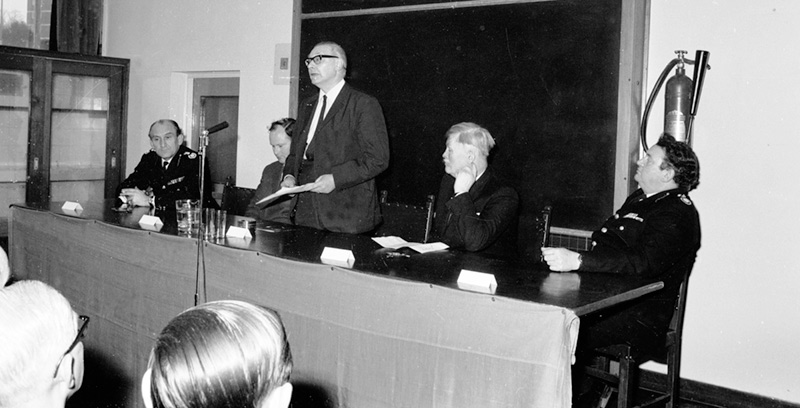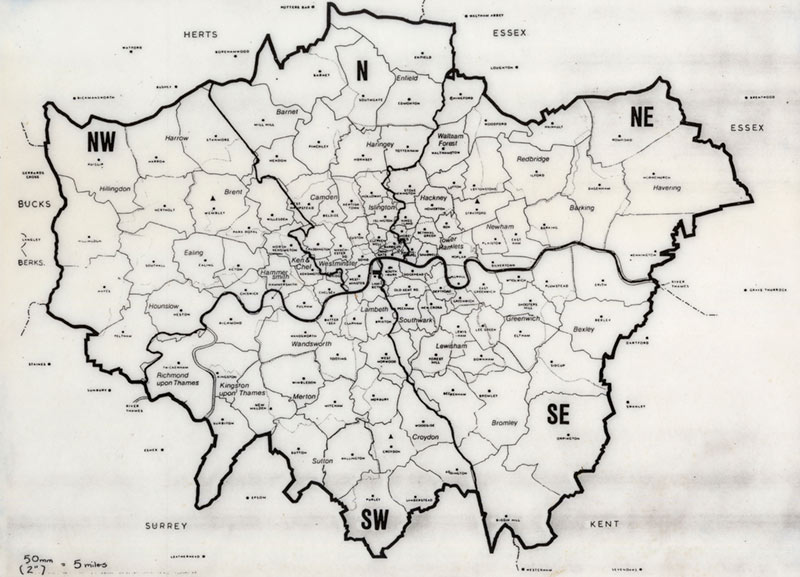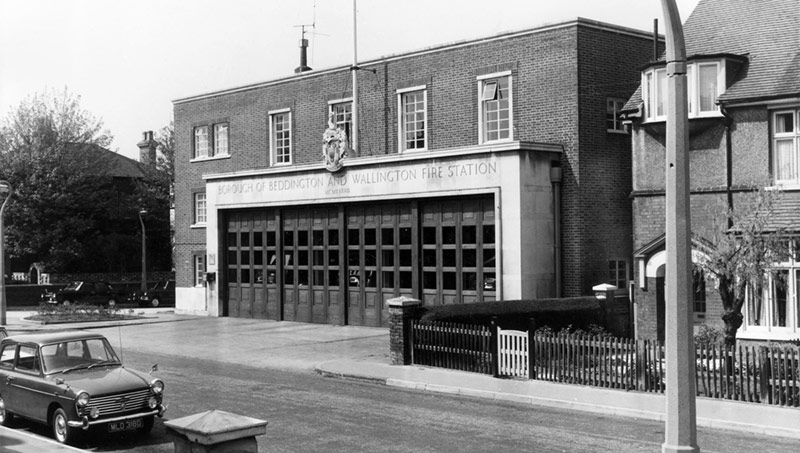Economic and political changes meant that by the 1960s the idea of what London was had expanded. So after consultation, the London Government Act in 1963 came into effect, and on 1 April 1965 London’s borders were redrawn to include its suburbs.

The photo above shows the Leader of the Greater London Council (standing), Paddy Henry, Chairman of the GLC's Fire Brigades Committee (to his left) and Joe Milner, Chief Officer of LFB (far right) giving a press conference and presentation about the transition.
The London Government Act created the Greater London area we know today – 32 London boroughs and the City of London. The population of London increased from over 3.2 million in the old County of London, to over 7 million in the newly established Greater London area.
Until 31 March 1965, the County of London was managed through an elected body, the London County Council. This area, with small changes, had not really altered much since 1889. The Greater London Council (GLC) formed in its place would provide services to this much larger area.
As a result London Fire Brigade then became responsible for public fire services in these 32 new London Boroughs, and City of London. This covered a total area of over 1610 square kilometres. This was over five times the size of the old County of London.

The GLC area incorporated all fire stations from the County boroughs of East Ham, West Ham, Croydon, and the entire County of Middlesex, along with LFB. Some fire stations from the counties of Essex, Hertfordshire, Kent and Surrey were also transferred. This increased LFB’s total of fire stations to 124 and intergrated thousands of staff.
It is important to remember that most of the County Fire Brigades affected by these changes had only existed since 1948. Formed after the National Fire Service was disbanded less than 20 years earlier, their own organisations were still integrating the separate cultures of many individual local Brigades. For example, Middlesex Fire Brigade had been made up of 26 separate Brigades which had existed before the Second World War.

Some areas including Bromley, Wembley, Wallington and Heston still use those original local fire station buildings.
Additionally, from 1965 onwards, LFB had to protect semi-rural areas such as North Ockenden (in the London Borough of Havering) and Keston (in the London Borough of Bromley). There were also large suburban areas, such as the London Borough of Harrow, which also presented different firefighting needs to the industrialised city that the LFB was previously structured to deal with.
The formation of the GLC created a unique set of challenges and opportunities as well as making LFB one of the largest public fire and rescue services in the world. It had an impact on many key elements of the Brigade including the structure of command, vehicles, equipment and uniform.

The photo above shows the GLC cap badge.
The Greater London Council was responsible for the operations of LFB for 20 years before it was eventually disbanded in 1986.
This article was researched and written by museum volunteer Alan F.